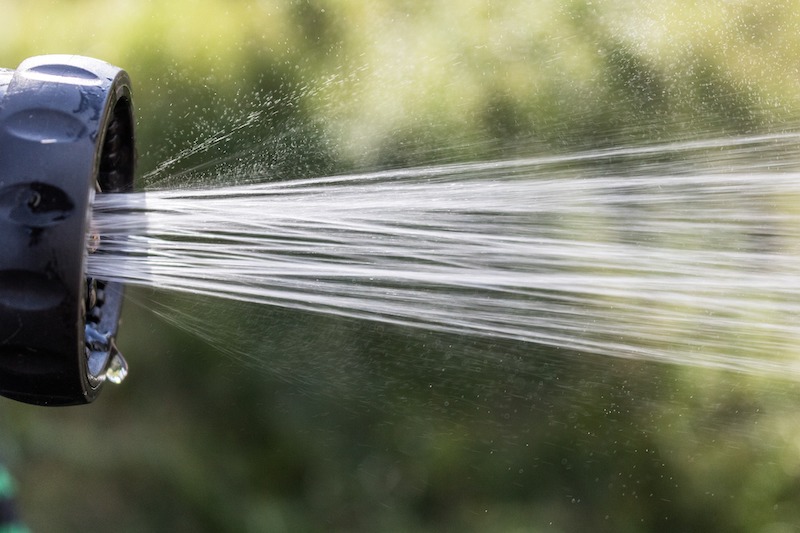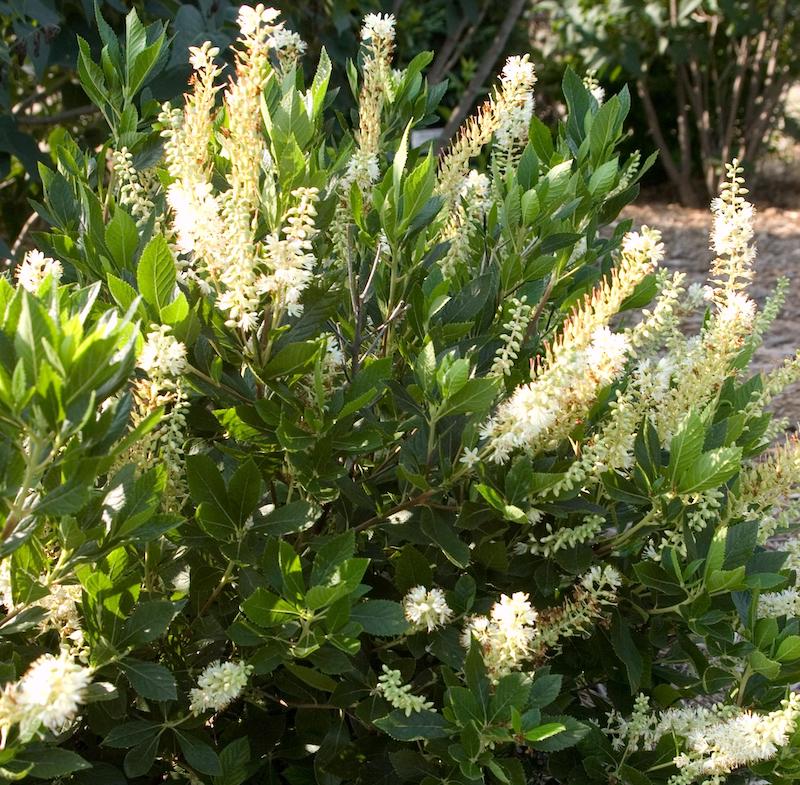Summersweet (Clethra alnifolia) is native to swampy areas within North America. This shrub can grow in a wide range of soil types and regions. But one thing is certain: Summersweet loves its water. For best results in keeping Summersweet healthy and thriving, choose a spot that has consistently moist soil and access to water. This could mean growing in a rain garden, next to a pond, near a stream, or in a regularly watered garden bed. To help Summersweet survive hot summers, deep, consistent watering is a must in its first year in your garden.

How To Tell If Summersweet Needs Watered
Some signs that Summersweet is drying out too much include dull, wilting leaves, drooping upper branches, yellowing lower leaves, and crispy leaf edges. When shrubs dry out, the first leaves to suffer are older ones, which is why you will often see the lowest leaves turn yellow and drop. Because Summersweet does best in consistently moist soil, it is important to make sure the soil never dries out completely. If your soil is dry and cracked on the surface, it is likely the soil is dry deeper in the ground as well, depriving the roots of necessary moisture.
Despite being a plant that can survive in damp, marshy areas, it is still possible to overwater Summersweet. Summersweet can tolerate a wide range of soil types, from fast-draining sand to water-retaining clay. When planted in clay soils, it is important to amend the soil so that it drains well. Sitting in heavy, wet soil increases the chance of root diseases in Summersweet. To prevent this, add compost or soil conditioner into your soil when planting.
How Often To Water Summersweet
In the first year in your garden, Summersweet will need regular, deep watering to help it establish healthy, deep roots. This may mean watering Summersweet every few days or installing an irrigation system to prevent the roots from drying out in hotter and drier regions. In more temperate regions, you may need to provide Summersweet with more moisture than rain provides.
After a year in the ground, you will not have to water Summersweet as frequently. It is still a good idea to check the soil moisture regularly by feeling the soil. To prevent the roots from drying out, water once the top few inches have dried. Continue to water deeply, as this will continue to help the plant grow deep roots.
When Summersweet is in a pot or planter, you will want to maintain consistent moisture around the roots. Plant Summersweet in high-quality potting soil and use a pot with drainage holes. When watering, add water until it comes out the bottom of the pot, ensuring that the water is reaching the entire root ball.

Best Time To Water Summersweet
The best time of day to water Summersweet is in the early morning. Watering when temperatures are lower helps more water reach the roots and less is lost to evaporation. This is especially important in the summer when the heat and sun can prevent water from permeating the ground. Watering in the morning and avoiding wetting the leaves will also reduce the chance of foliar diseases, like fungal and bacterial infections.
In the winter, Summersweet will likely not need to be watered in colder regions. In warmer regions, water occasionally to prevent the soil from drying out completely, especially if Summersweet keeps its leaves. When plants are brought indoors, maintain consistently moist soil.
How to Water Summersweet
Step 1 - Feel the top few inches of soil
With a finger, reach into the soil surface and feel how far down the moisture goes. Wet soil will feel cool to the touch, while dry soil will feel warmer and may be harder to move. The soil surface should be damp and cool to the touch.
Step 2 - Water around the base of the plant
For plants that have recently been planted, the soil surface should be consistently damp but not soggy. Water for about 1 minute per plant, until water sinks into at least the top 6 inches of soil. For more established plants, the soil surface can dry slightly, but never to the point where the soil cracks. Established plants will need less frequent but equally as deep watering.
Step 3 - Check soil moisture regularly
Summersweet is intolerant of drying out completely. New plants may need to be checked every couple days, especially in the hottest parts of the year. If there has not been rain recently, even established Summersweet may need deep watering.
Step 4 - Look for signs of underwatering
Some signs that Summersweet is not staying moist enough can be crispy leaf edges, yellowing lower leaves, wilting branches, and lackluster or short-lived flowers.
Summersweet Watering Tips
- Do not allow Summersweet roots to dry out completely.
- Maintain consistent moisture.
- Check soil moisture regularly, especially in the hottest months.
 |
Author Lynn Gusman - Published 1-13-2023 |
